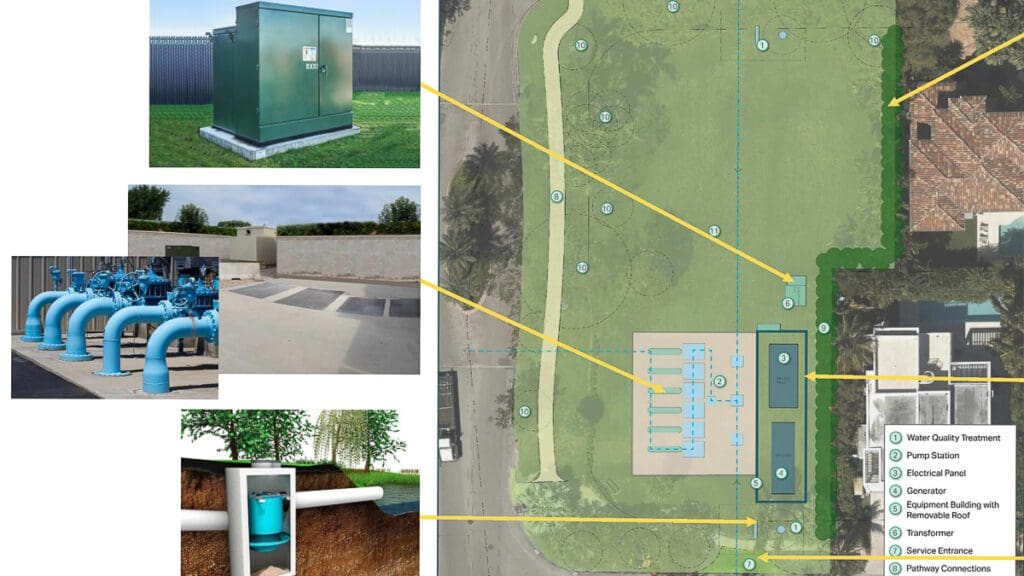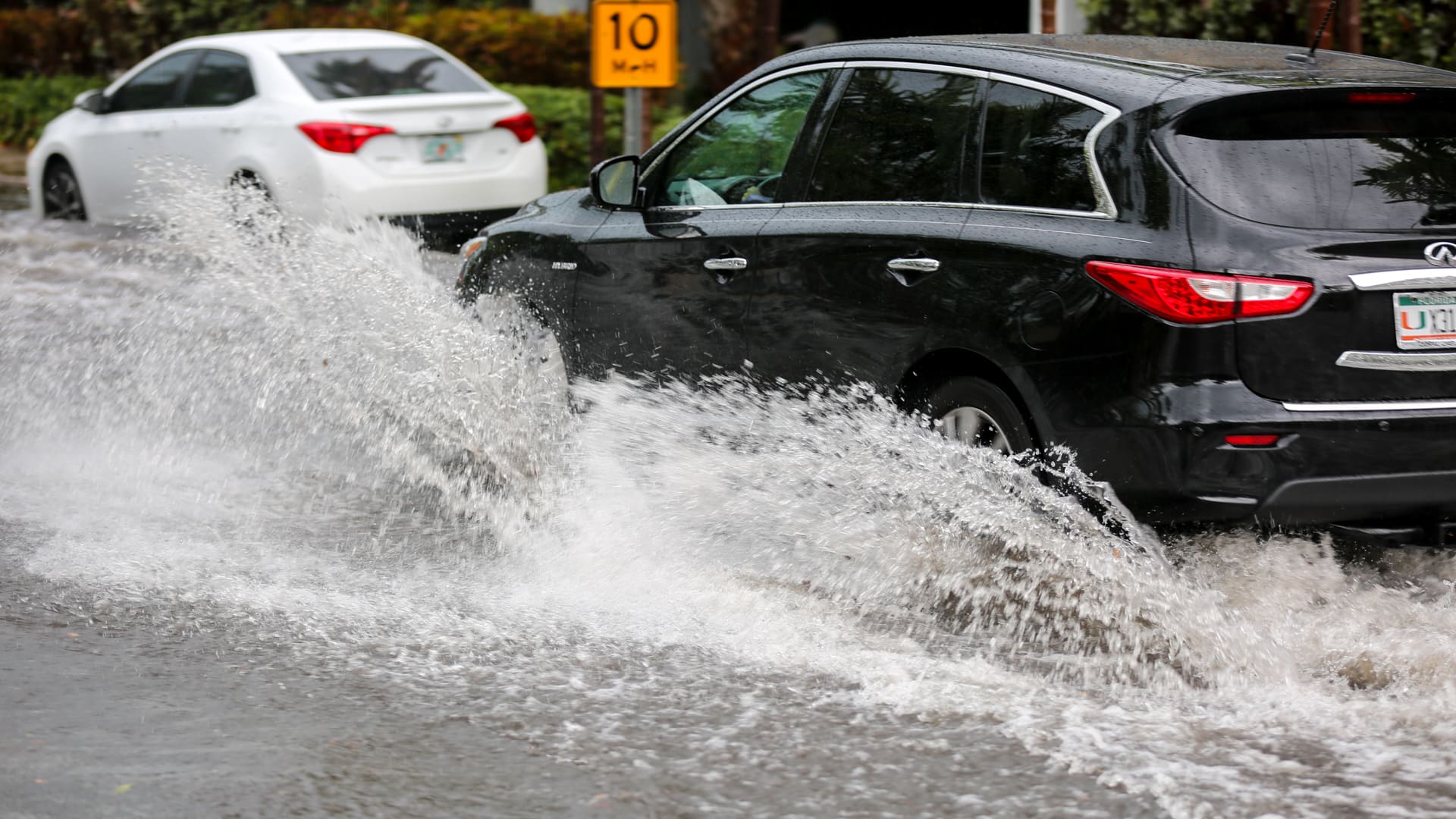Village Manager Steve Williamson presented a less expensive Big Dig flooding plan Wednesday that cuts the price from $307 to $248 million – but it still might be too costly for some elected officials. Residents also heard for the first time how much property owners can expect to pay out of their pockets.
Reeling from the initial estimate, council members had asked Williamson in November to come back with a range of lower-cost scenarios that all would remove flood waters less quickly. There were 113 model runs, 18 pump and discharge combinations and 43 scenario runs. But after extended number-crunching, engineers settled on a single option.
“Alternative 4 is the clear winner,” was the headline on a 49-page summary prepared by the AECOM firm.
“The uncertainty of climate science and rainfall,” said engineer Thomas McGowan, led designers to recommend a system powerful enough to remove 2 inches of water per hour. McGowan, AECOM’s project manager, said that capacity would protect against all but the most extreme climate predictions.
But Council Members Ed London and Brett Moss, seeking a lower price tag, remained critical.
“They’ve made their mind up already,” London said after the workshop, who wanted more discussion of less expensive systems. Moss, rising from his seat to point at a map, said some neighborhoods in Key Biscayne don’t currently flood as badly as others and that he’d rather prioritize undergrounding utilities in some areas.
Climate scientists predict that rainfall rates will increase in the decades to come. Indeed, just this week, the head of FEMA urged Miami communities to make investments in stormwater systems because of climate change.

The Council is now scheduled to vote Jan. 23 on a work order for AECOM to move forward on Zone 1 – the oft-flooded neighborhood around the elementary school, the first phase of what will be a decade or more of disruptive projects.
The Big Dig would replace the island’s antiquated and inefficient gravity stormwater system, redesign streets, bury utility lines, and strengthen the island against sea-level rise. It is by far the largest infrastructure project the island has undertaken. Voters approved a $100 million bond measure in 2020 to help pay for it.
Financial Projections
For the first time, the administration presented details on how much residents will pay, and how the project will be financed.
If the recommended plan is adopted, a single family home of 4,500 square feet, annual payments would average $2,549 a year. Condo residents would pay far less with the owner of a condo of 750 square feet paying on average $748 a year.
The money would go to repay borrowing the Village will take on to complete the project – the majority of the project is paid through the state’s Clean Water State Revolving Fund, which provides low-interest loans to communities. The GO bond measure would pay for 30% of the project. Most of the loan repayments will come from stormwater fees under a formula that was updated last year.
Williamson said the extra money paid by residents would most likely be offset by decreases in property insurance and sustained property value increase, but no specifics were presented, and the comment seemed aspirational.
The “Alternative No. 4” is designed to handle a storm that dumps 7 inches of rain in 24 hours. It uses the NOAA Intermediate High projection for sea level rise.
Engineers were able to bring down costs from the original $307 million figure by recommending smaller pumps that would more slowly drain streets. The new plan allows for ponding up to 6 inches over the crown of the road – where before it was only in the swales. Pipe sizes would also be smaller.
Another cost driver: whether the Village will have to pay for property easements. If an additional easement is not obtained in Zone 1, there is an additional $7.3 million cost to pump water to an outfall at the Yacht Club, McGowan said.
McGowan said the new plan allows the Village to be more flexible in making decisions for individual zones down the line as each zone would be a system unto itself.
Still, it appeared some members wanted to entertain additional discussion about further system downgrades, raising doubt about the vote set for later in the month. “That’s a debate worth having,” said Council Member Frank Caplan.
McGowan said engineers did not even consider a water removal rate slower than 1.8 inches per hour. But he said dropping it another half-inch might shave $20 million.
Moss said concerns that some low-lying homes might be unprotected with a less expensive system are misplaced because those structures would likely be replaced with new elevated residences.
Council Member Allison McCormick said costs could be reduced in other ways, such as acquiring land for outfalls or even low-lying properties.
“In terms of money well spent, there’s the opportunity to drastically reduce some of the costs,” she said.
Invest in Local News for Your Town. Your Gift is tax-deductible
JOHN PACENTI is the executive editor of the Key Biscayne Independent. John has worked for The Associated Press, the Palm Beach Post, Daily Business Review, and WPTV-TV.



